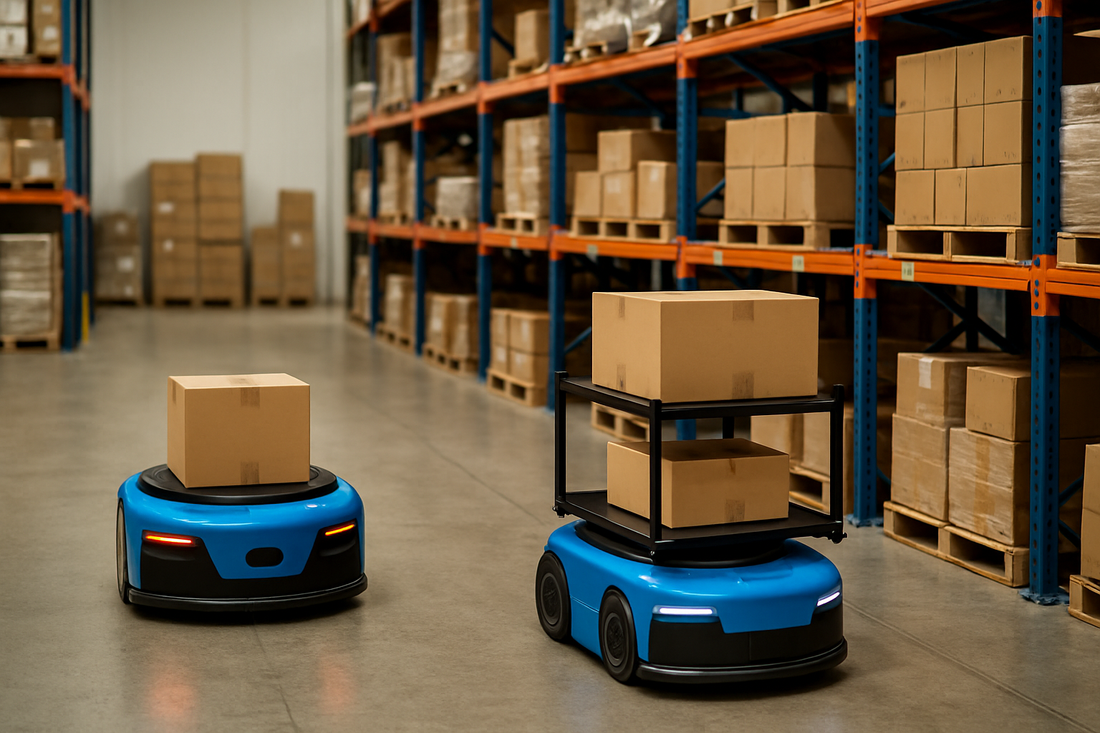
Is warehouse automation out of the question for small businesses?
I recently read an article that talked about how the right warehouse software makes “bot” more efficient. This completely caught me off guard as somebody who works in a distribution warehouse for a small company—what “bots” are they talking about? This started me down the rabbit hole of what‑size companies are using robots in their warehouses, and whether it’s a viable option for small businesses like ours or only a dream. Do large companies have the privilege of making their warehouses the most efficient and cost‑effective because they can invest the money, or is there a way for small businesses to capitalize on the wave of AI and robots flooding the market? It really made me wonder if I will see an automated small‑business warehouse in the near future.
The Bots Have Already Arrived—Just Quietly
Robotic pickers and autonomous mobile robots (AMRs) no longer live solely in Amazon mega‑facilities. In fact, the International Federation of Robotics reported that the market value of industrial robot installations hit an all‑time high of US $16.5 billion this year, and the momentum is still accelerating.(IFR International Federation of Robotics) Analysts now estimate that by the end of 2025 more than 4 million warehouse robots will be operating inside roughly 50 000 facilities worldwide—a figure that includes thousands of midsize and small warehouses, not just the giants.(WarehouseWiz Inc.)
What’s changed? Two key shifts:
-
Robots‑as‑a‑Service (RaaS) pricing lets companies lease fleets instead of buying outright, turning a capital expense into a monthly fee. Researchers tracking the AMR market say the RaaS model is the single biggest accelerant for adoption in 2024 and 2025.(Business Wire)
-
Flexible automation, not fixed conveyor systems. AMRs navigate with sensors and cloud‑based maps, meaning you can add five units this quarter and double that fleet during peak season—without pouring new concrete or shutting down aisles. “Nobody wants to bolt much down,” notes DHL Supply Chain’s Matthew Dippold, whose team scales robot fleets up and down for holiday surges.(SupplyChainBrain)
Can a 40 000‑Square‑Foot Operation Really Go Robotic?
One case study that caught my eye was a GEODIS warehouse in Dallas. Faced with hauling 200‑pound cartons of pet food, the 3PL integrated a dozen Locus Vector AMRs across just 40 000 square feet—hardly a sprawling footprint. The result: picking productivity jumped from 65 to 98 units per hour, and overtime fell by 75 percent.(Locus Robotics)
While GEODIS is a large corporation, that Dallas site operates on a scale comparable to many regional distributors. The lesson is clear: you don’t need a million‑square‑foot box to see a payback.
The Price Tag: Not as Out of Reach as You’d Think
Yes, headline numbers can be scary. A full automation overhaul can top a million dollars.(CFO Dive) But entry‑level AMRs now start around $10 000–$20 000 per unit, with high‑capacity models hitting $100 000.(QVIRO) Spread over a five‑year lease, that’s often comparable to a single forklift payment plan—especially when you count maintenance, batteries, and software in the monthly fee.
A recent Warehouse Automation & Order Fulfillment Study found that 42 percent of companies plan to spend between $100 000 and $1 million on automation in the next five years, and nearly half of survey respondents work for firms with fewer than 100 employees. In other words, budgets once reserved for Fortune 500s are now being sketched out by teams the size of ours.
Why Software Matters More Than the Steel
Robots are only half the equation; the nerve center is the warehouse‑management software (WMS) that tells each bot when to roll, queue, or recharge. Modern cloud WMS platforms expose open APIs, so the small‑business IT team (or an outside integrator) can plug AMRs directly into existing pick‑tickets and inventory logic rather than rebuilding the entire tech stack. Vendors such as Logiwa and others pitch “robot‑ready” WMS subscriptions precisely to keep that integration pain off your plate.(Logiwa | WMS)
A Roadmap for the Rest of Us
Magazine features love rags‑to‑riches robot stories, but most small warehouses will automate in stages:
-
Start with travel, not touch. The easiest ROI comes from eliminating the dead time employees spend walking long aisles. AMRs can shuttle totes to stationary pick stations, slicing miles off daily footsteps while letting humans focus on dexterity tasks like quality checks.
-
Measure, then multiply. Before you order a single bot, benchmark units‑per‑hour and error rates. Locus Robotics engineers insist on baseline metrics because the first weeks of deployment often deliver 30–50 percent gains—the data makes that obvious to skeptical CFOs.(SupplyChainBrain)
-
Think seasonal. If peak season triples your order volume, negotiate a RaaS contract that lets you “flex‑rent” extra units for 90 days, then send them back.
-
Upskill, don’t downsize. Early adopters report that employees gravitate toward monitoring dashboards, tweaking workflow rules, and maintaining fleets. The robots handle the cart pushing; people graduate to problem‑solving roles that are easier on backs and better for retention, as GEODIS discovered.(Locus Robotics)
Will We See a Fully Automated Mom‑and‑Pop DC Soon?
Probably not the sci‑fi version with humanoid helpers plastered across tech headlines. Even Brad Porter, Amazon’s former robotics chief, is betting on simple collaborative bots like Proxie, not million‑dollar androids, for mainstream adoption.(WIRED) But a hybrid workforce—part human, part fleet of rolling robots—already fits inside 50 000‑square‑foot boxes and modest capital plans.
Given the price curves and leasing models now on offer, the question is shifting from “Can we afford a robot?” to “Can we afford not to?” Labor shortages and customer expectations for same‑day shipping aren’t easing. If we wait until every competitor has bots zipping past pallet racks, we risk competing at 2015 speeds in a 2025 marketplace.
For small distributors like ours, the dream of an automated warehouse is no longer science fiction—it’s a line item, a pilot project, and, with the right software, a realistic next step toward staying competitive. The bots might be quiet, but their march toward smaller businesses is anything but.
